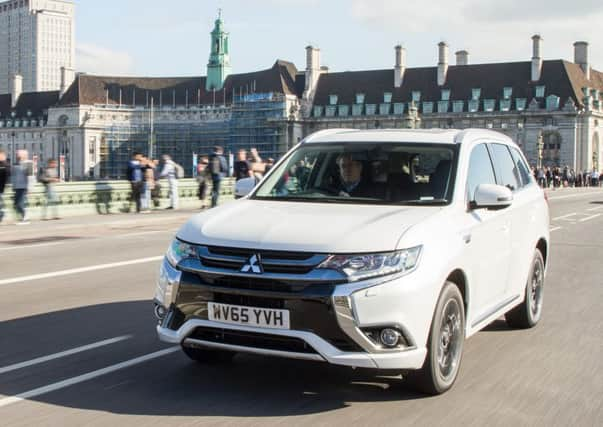Nip and tuck goes a long way for Mitsubishi Outlander PHEV


According to Mitsubishi, the hybrid is now eight per cent more efficient than the outgoing model, delivering an average fuel consumption of 159 mpg, an improvement on the previous figure of 148 mpg. During our long-term test last year we achieved an average of 77 mpg over a total of 2300 miles, but far exceeded the 148 mpg figure on individual journeys when we stayed within the 32-mile battery-only range.
While we didn’t notice any significant difference to our mpg figures this time round, one of the many small improvements to the new model was how those mpg figures are presented.
Advertisement
Hide AdAdvertisement
Hide AdIn what was — in our view — a rather glaring issue given the PHEV’s USP, the readout of the old model was unable to give you a three-figure mpg reading. If the car achieved a figure beyond 99 mpg, the display would read as nought. A software upgrade to the 2016 Outlander rectifies this issue, and careful drivers are now treated to readings in the hundreds on short journeys. Our best was 467 mpg on a four-mile trip.
Other improvements include more supportive front seats, more interesting dashboard detailing, a redesigned steering wheel with more intuitive controls, better cabin materials and LED daytime running lights.
The reversing camera setup is much improved, with the rear lens augmented now by 360 degree cameras, providing a split-screen reverse and top-down view to assist when negotiating the big SUV into a parking spot.
Driving dynamics have improved as well. A new suspension setup, coupled with increased rigidity to the chassis, means that the Outlander is far sharper in the corners and has less of a tendency to wobble around when negotiating the speedbumps and potholes that seem to cover 90 per cent of Scotland’s road network.
Visually, the Outlander is far more arresting than before. Nowadays motoring manufacturers need to have a catchy name for the design language they apply to their corporate nose and Mitsubishi are calling this one ‘Dynamic Shield’. With sharper, more dramatic styling at the front end and a more angular grille bracketed by a sharp light cluster and chrome ‘X’ detailing, this is the best-looking Mitsubishi since they began to depart from the ‘Jet Fighter’ nose which characterised their designs in the late noughties.
Scotsman Motors were so impressed with our long-term test car last year that we named the Outlander PHEV our 2015 Plug-in Car of the Year. Starting at £29,249, when you factor in the UK Government’s £4,500 plug-in car grant, the improved Outlander represents better value for money than ever.
If you’re considering buying one though, don’t sit on the fence too long. That £4,500 plug-in car grant was previously £5000 — and value for money is set to be diluted further as changes to legislation mean plug-in hybrid cars will only be eligible for £2,500 off the list price from March 2016.